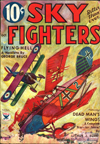“Sky Fighters, December 1934″ by Eugene M. Frandzen
Eugene M. Frandzen painted the covers of Sky Fighters from its first issue in 1932 until he moved on from the pulps in 1939. At this point in the run, the covers were about the planes featured on the cover more than the story depicted. On the December 1934 cover, It’s a battle of the Sea as the Phönix Seaplane is attacked by an Austrian Sea Tank!
The Ships on the Cover
TANKS, bristling with machine-guns 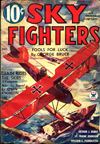 and one pounders, crawled on to the muck and mud of the British front near Cambrai during 1916. Slowly these squat engines of destruction inched closer to the German hordes. Relentlessly they smashed the Boche lines, literally buried them in their supposedly impregnable trenches.
and one pounders, crawled on to the muck and mud of the British front near Cambrai during 1916. Slowly these squat engines of destruction inched closer to the German hordes. Relentlessly they smashed the Boche lines, literally buried them in their supposedly impregnable trenches.
Tanks from that day on held a major position in the War’s spotlight. Not only on land did the tanks crush the enemy, they did things on the water.
A Slick Stunt!
About 400 miles southeast of Cambrai on the Adriatic is the fortified port of Pola. During the war the Austrians were top men of this strategic spot. In 1916 the Italians barged in with a flock of torpedo boats and raised hell with things in general, but it was not until 1918 that they pulled one of the slickest stunts of the whole war. They rigged up a small speed boat with geared cables running along each side just as a tank’s tractor treads are placed. Steel claws on this tractor cable made this boat literally a sea tank. It could do anything on the water that its famous iron brother could do on land.
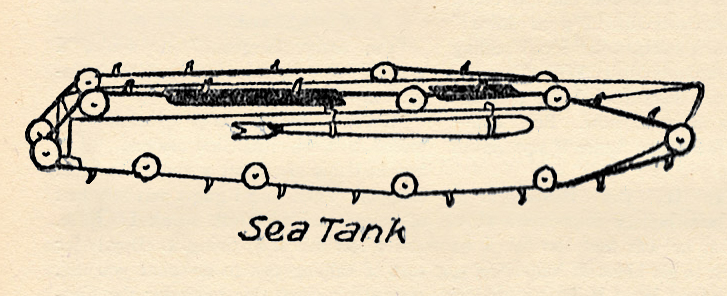
Across the mouth of the harbor of Pola the Austrians had constructed stout obstructions which would frustrate any more raids from the Italian mosquito fleet. But they had not figured on the gnat fleet. That fleet consisted of two boats shown on the cover. Each boat carried two torpedoes, one swung on either side, two men and a machine-gun.
Bottled up in the harbor was the Austrian fleet. Vigilance had somewhat relaxed, the Austrians felt their position to be impregnable from sea raids.
And then out of the Adriatic two small strange-looking craft pounded across the choppy waves straight up to the harbor barriers. They slowed down, eased their noses against the wall, gears were meshed and the endless chain of iron claws scratched at the wall, dug in, held and the prows of the tiny raiders eased over the top. Slowly the boats were heaved over the first barrier. Down splashed their noses. One eased over the second obstruction and tore through the inner harbor toward the Austrian fleet.
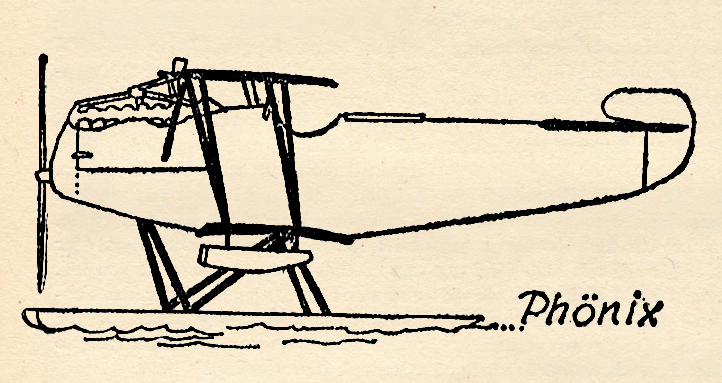
Sirens screamed, land batteries roared. The battleships brought their guns into position and blazed away. Two Phönix seaplanes careened off the water, clawed their way into the air and dove on the brazen raiders. Down swooped one of the planes, front guns lacing the sea tank just pulling itself over the second obstruction. The after machine-gun on the sea tank bucked and jerked as its gunner arced it to meet his diving foe. The observer in the rear of the Phönix pushed his gun over the side, blasted slugs down. One bullet hit a vital part of the sea tank’s mechanism. Its engine sputtered, went half dead. Score one for the Austrians.
Two Famous Firsts
But the second sea tank miraculously raced safely through the gauntlet of falling shells and the fire of the second Phönix. The machine-gun went into action on the second sea tank and the pursuing seaplane’s propeller sprayed into a thousand bits. Score one for the tanks.
On went the tiny boat until at blank broadside range it released its two torpedoes at the 20,000 ton dreadnaught. A terrific concussion shook the harbor. Slowly the majestic fighting ship listed, shuddered, and sank.
One tiny, battered sea tank clawed its way out of the harbor and limped slowly across the choppy surface of the Adriatic toward home. Two famous firsts for the tanks; 1916 at Cambrai—1918 at Pola.
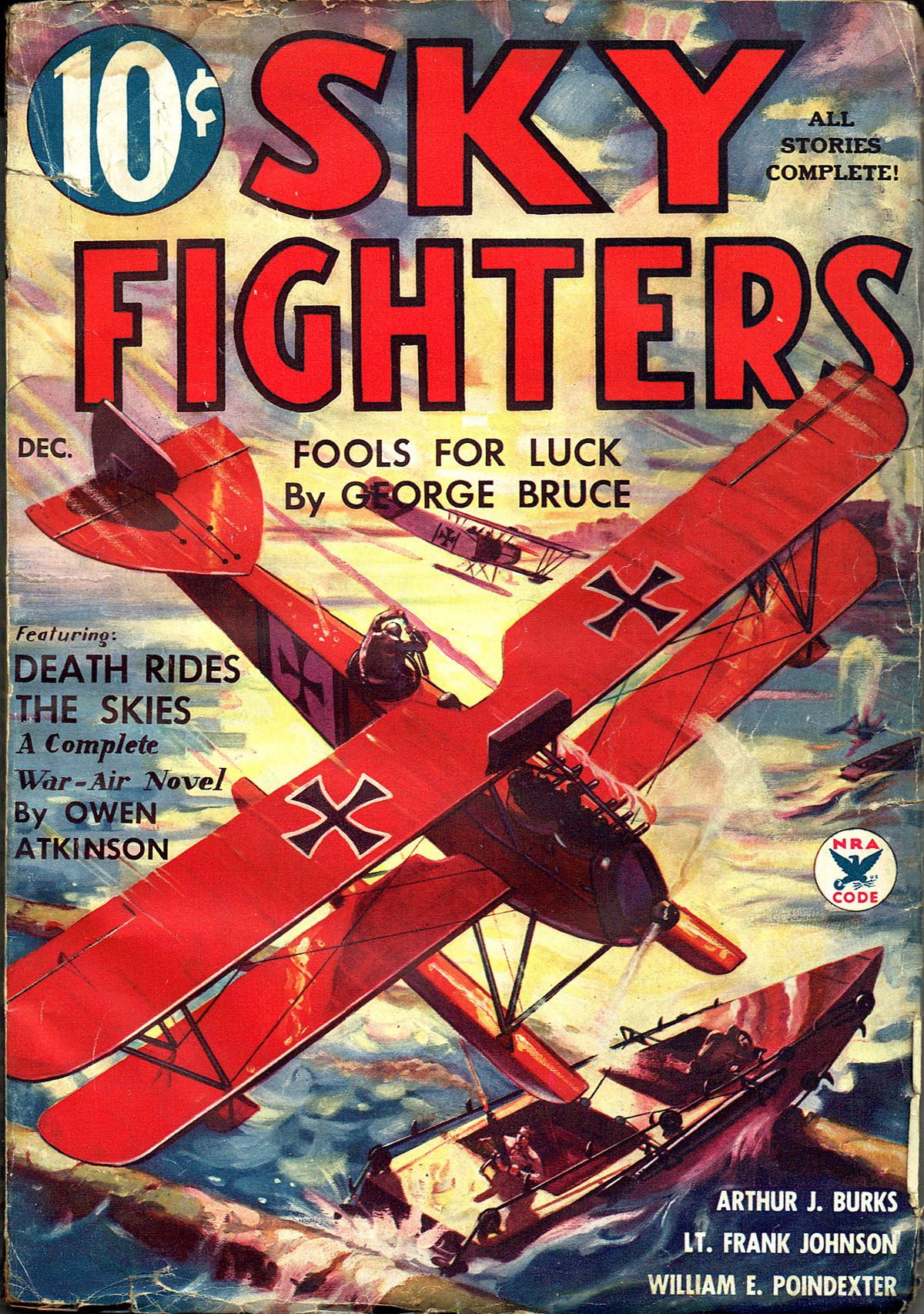
Sky Fighters, December 1934 by Eugene M. Frandzen
(The Ships on The Cover Page)
Next time, Mr. Frandzen features the Fokker E.1 and the F.E.2!





 was the first of the Royal Flying Corps pilots to make a distinguished record. Unlike the French, the British made no mention of their air pilot’s victories. One day Ball wrote home that he had just counted his 22nd victory. His mother proudly showed this letter to her friends. Ball was disbelieved.
was the first of the Royal Flying Corps pilots to make a distinguished record. Unlike the French, the British made no mention of their air pilot’s victories. One day Ball wrote home that he had just counted his 22nd victory. His mother proudly showed this letter to her friends. Ball was disbelieved.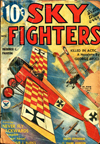
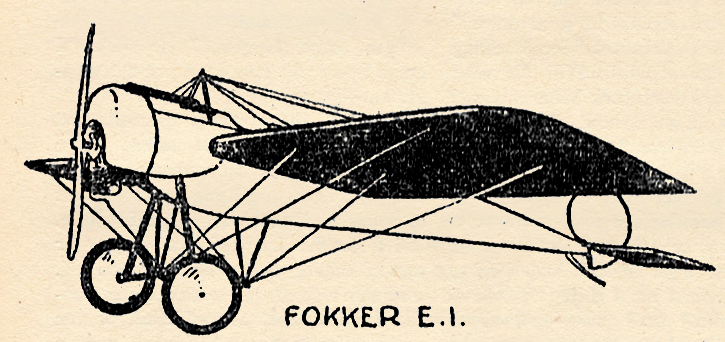
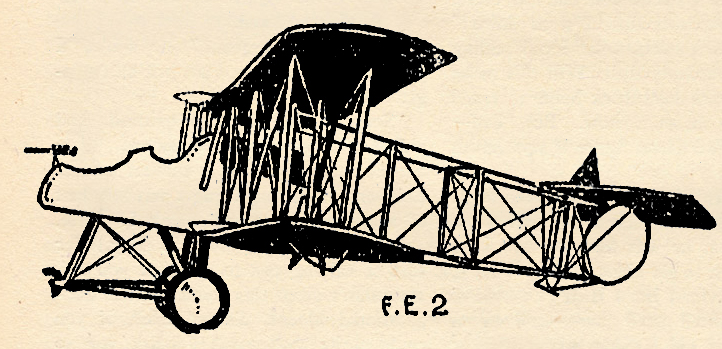
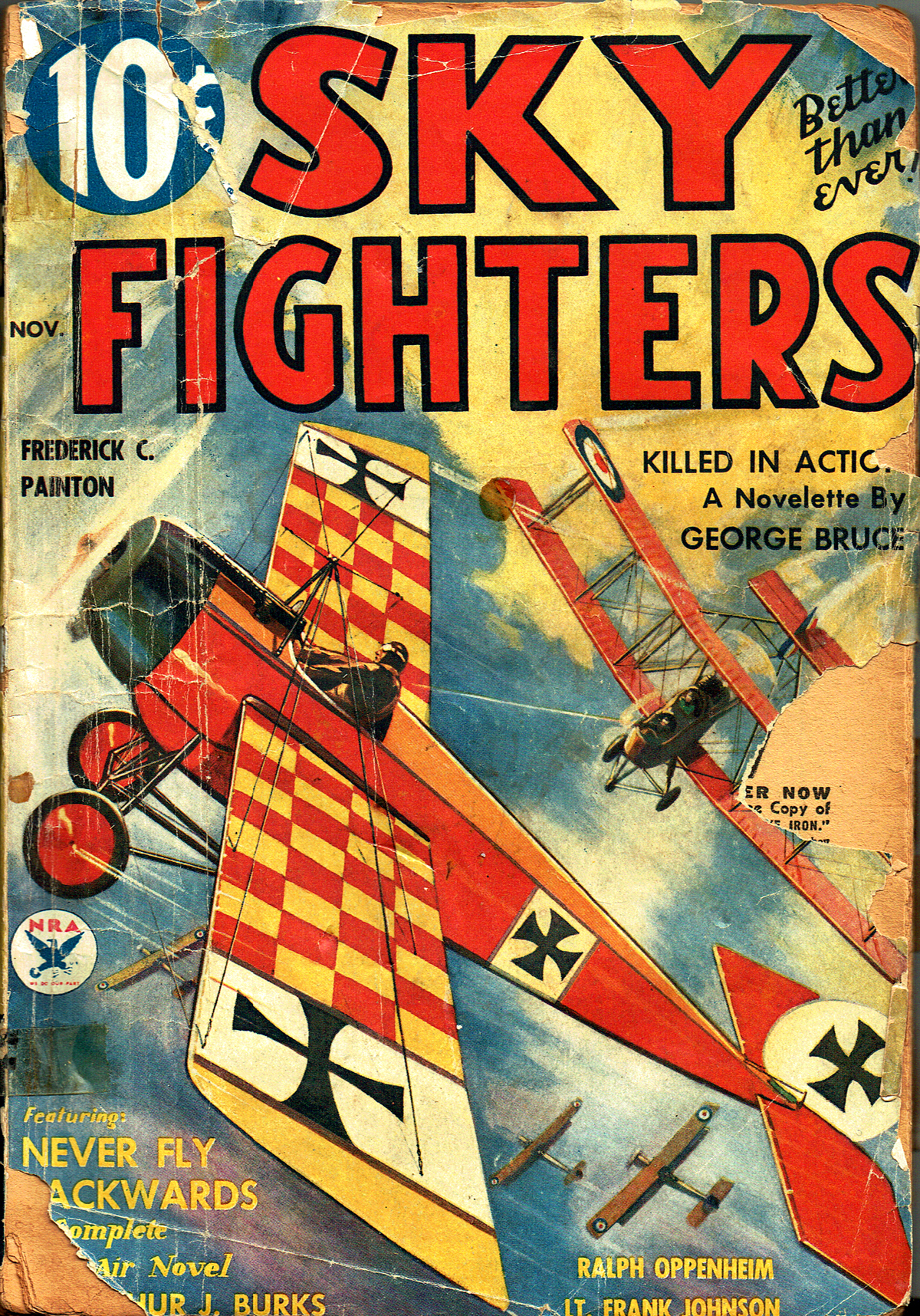
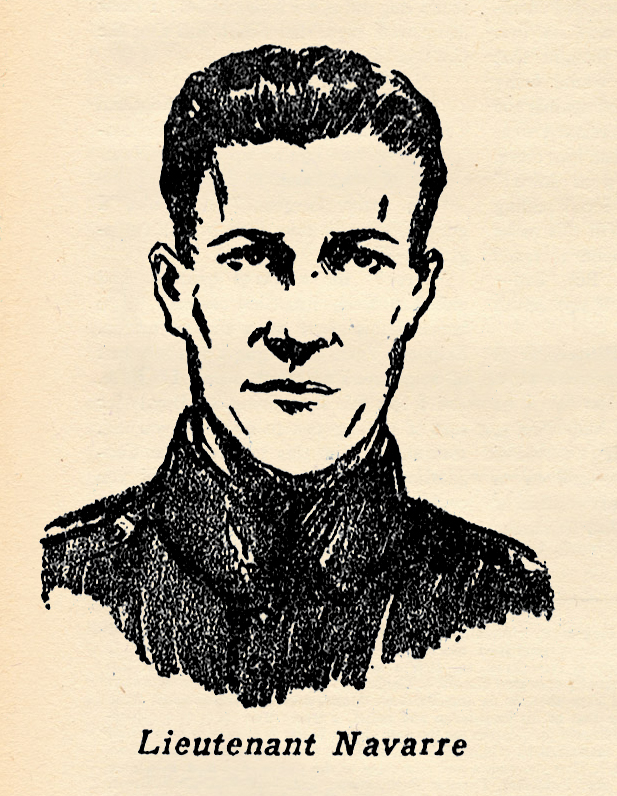 America entered the War, there was one name that was consistently emblazoned in the papers along with Marshal Joffre, Earl Kitchner, and the other high ranking generals. It was the name of Navarre, the “Sentinel of Verdun.” Navarre was the first Ace, the first man to destroy live enemy aircraft in plane to plane combat. At the first battle of Verdun he did yeoman duty. It was his reports brought in after solo patrols far in the rear of the German lines that enabled Marshal Joffre to so dispose his defense troops at Verdun that the attacking armies under the command of the German Crown Prince were never able to take the city.
America entered the War, there was one name that was consistently emblazoned in the papers along with Marshal Joffre, Earl Kitchner, and the other high ranking generals. It was the name of Navarre, the “Sentinel of Verdun.” Navarre was the first Ace, the first man to destroy live enemy aircraft in plane to plane combat. At the first battle of Verdun he did yeoman duty. It was his reports brought in after solo patrols far in the rear of the German lines that enabled Marshal Joffre to so dispose his defense troops at Verdun that the attacking armies under the command of the German Crown Prince were never able to take the city.